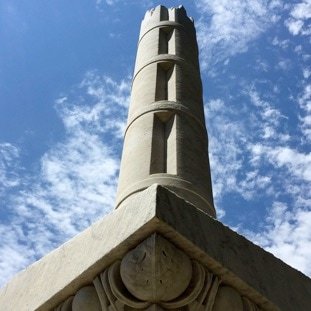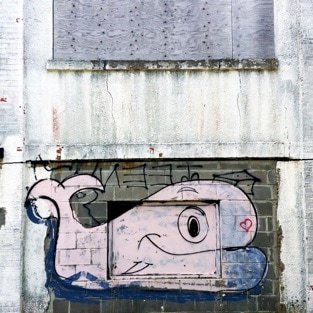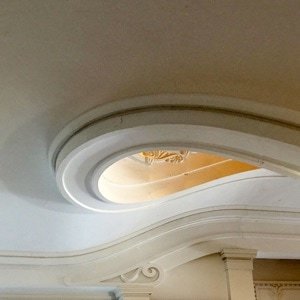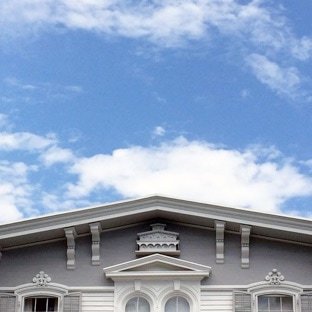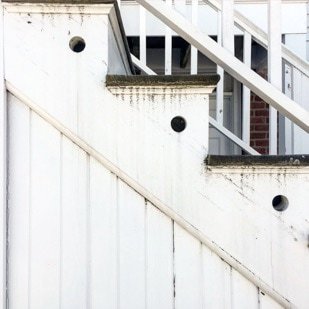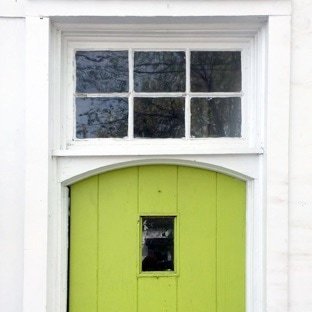TAKE A CLOSER LOOK
Sag Harbor – Take a Closer Look was inspired by Bob Weinstein’s photo exhibit held at the Whaling Museum in August, 2016. This ingenious tour offers discoverable images from all over Sag Harbor, and can be experienced both as a gallery and a walking tour. Bob’s rhyming couplets offer riddles about where these images were taken. Following the clues and places will take you all around the village for a delightful walk.
The exhibit ran from August 26 - October 31, 2016.
See the Museum’s website for more information.
Piano Man and Uptown Girl, anchors aweigh display; It is his home or so they say, right here along the bay. Corner of Bay and Rysam Street
Once a school, and a jail, and museum of late... The honorary home of our very own… the oldest in the State. Fire Museum, c. 1835 The Montauk Hose building has also served as town office, school and a jail, as well as the fire station. It now houses a museum dedicated to the Sag Harbor Fire Department, the oldest in New York State.
Whalers’ Church, c. 1843, A National Historic Landmark
Egyptian detail, named for the Whale, and much loved by its people, It’s quite a sight, but half its height, since it lost its steeple. Whalers’ Church, c. 1843, A National Historic Landmark Built in 1843-44, this church was erected as a monument to the town’s whaling prosperity. Designed bynoted architect Minard Lafever, the exterior is the best example of the Egyptian Revival style in the United States today. Originally, the church was topped with a 185-foot steeple visible to ships rounding MontaukPoint as a welcoming beacon. The steeple was lifted off intact by the 1938 hurricane and smashed into the Old Burying Ground. It was never rebuilt.
It”s wood and brick, and stain glass too, somewhere on Division... A place to live? A place to pray? You make that decision. c.1897 Built in 1897, this unusual brick and cedar shake structure is found on the corner of Division and Latham Streets.
A modest place, but home to those who prayed with a heavy load. It’s known today, or so they say, as a stop on the Underground Railroad. St. David AME Zion Church; c. 1857 The home to a congregation of African Americans, Native Americans and people of European Ancestry,the Church is believed to have been a stop on the Underground Railroad.
A monument to those who died, in pursuit of the mighty whale... It shows a mast that broke in half, once the ship set sail. Broken Mast Monument, c.1856 The Broken Mast Monument, found in Oakland cemetery, was sculpted by Robert Eberhard Launitz the “father of monumental art in America” as a tribute to local men who lost their lives at sea in the Whaling Industry.
And there she sits, among the weeds, Schiaovoni Supply & Plumbing. It won’t be long, nor for a song, with 4 new condos coming! Jermain Avenue, the old Schiavoni Plumbing Supply building
A gift from Mrs. Russell Sage, a place for kids to play... Still popular, for lots of tots, to this very day. Mashashimuet Park, c. 1910 A gift from Mrs. Russell Sage in 1910, the park was developed to provide healthy and wholesome recreation for the youth and young people of Sag Harbor, especially those working in the factories.
The corner of Bayview and set back from Main... More like New York, so very urbane. L’Hommedieu House, c. 1840 This detached townhouse looks like it belongs in an urban context. Samuel L’Hommedieu, grandson of aHuguenot fugitive, operated a ropewalk–a long, narrow building where workers walked back and forth twisting hemp into rope for use in ships’ riggings, lines and cables.
If windows are the heart of a home, then this would be the eye. An oculus, set in a dome, brings light in from the sky. John Jermain Memorial Library, c. 1910 The John Jermain Memorial Library was donated by Mrs. Russell Sage to the Village in honor of her grandfather. With its round granite columns and Guastavino-designed dome, this structure is an impressive example of Beaux Arts Classical Revival architecture.
This lovely house all done in white embodies Greek Revival… and thar she blows, the story goes, of struggle and survival. Benjamin Huntting House, c. 1845 Benjamin Huntting II hired architect Minard Lafever, who designed the Old Whaler’s Church, to design aclassic, Greek temple-front mansion. It later became the summer home of Mrs. Russell Sage, and the Whaling Museum in 1936. As more than one text states, it is “a monument to the self-confidence of the successful whaler.” It is Long Island’s finest example of Greek Revival architecture.
Benjamin Huntting House, c. 1845
There she sits on Garden and Main, or really at its axis. This was a home, 9 children prove, and the place to pay taxes. Custom House, c. 1790 Sag Harbor became one of the first American seaports to be designated an official Port of Entry in 1789. For the next three decades, Henry Packer Dering, U.S. Custom Master, would be in charge of meeting the trading vessels and whaling ships which sailed into local waters. In this Federal house, Dering not only conducted customs business but raised nine children.
Must-see on Main, this beautiful home, is an Italianate confection. Brackets and columns and birdhouse remain, this house is sheer perfection. Hannibal French House, c. 1860 Built for the owner of the last of the great whaling firms, the Hannibal French House is an excellent example of the Italianate “Double Bracket” style.
East side of Main and to the south, This now is a store, once too was a house. Peleg Latham House, c. 1790 The Peleg Latham House, a typical Sag Harbor merchant’s house of the Federal Period, was designed with a residence above and a commercial story at street level.
Film noir or new wave, or something in between... Deco design and landmarked sign, it’s best known for its screen. Sag Harbor Cinema, c. 1927 Known as the Elite Theatre when it opened in the 1920’s, the theatre was renamed Sag Harbor Theatre when it was acquired by the Glynne’s chain in September 1927. This small town movie house was remodeled in 1936, and is best known architecturally for its vintage auditorium, white facade, and neon lettering which has achieved local landmark protection.
This little door is near a store, what’s inside obtuse. It’s very sweet, on Main Street, vibrantly chartreuse. Main Street, Sag Harbor
What was there, is no longer – a fire caused destruction. Now the seat where government meets, a confident reconstruction. Municipal Building, c. 1846 Originally built as a hotel, the construction of this imposing Italianate building after the great fire of 1845 expressed the feeling of confidence in Sag Harbor’s future during the whaling era.
It was a home, and then a house, perhaps of ill repute... Hotel, restaurant and a bar, raise a glass, salut! The American Hotel, c.1876. This structure was first built in 1824 by local cabinetmaker Nathan Tinker as his residence, with a boarding house in operation above. In 1876, Captain William Freeman and Bridgehampton farmer Addison M. Youngs bought the building from Tinker’s heirs, built a porch, installed a bar and dining room, and named it “The American House.”







